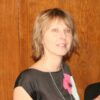Expert from University of Applied Science Dusseldorf

Prof. Dr. Bastian Leutenecker-Twelsiek / Photo provided by HSD
Today we are having an interview with Prof. Dr. Bastian Leutenecker-Twelsiek. With the beginning of this year’s lecture period of the winter semester 2020/21, Dr. Bastian Leutenecker-Twelsiek will take over a professorship for product development and rapid prototyping at the Department of Mechanical and Process Engineering at the Düsseldorf University of Applied Sciences. Prior to this, he worked for the high-tech company TRUMPF in Ditzingen, Baden-Württemberg, in the field of Additive Manufacturing(AM) as Head of AM Consulting and material development.
Let’s start with the brief introduction of your work. Can you please tell us a bit about your current activities and projects.
My teaching and research at University of Applied Science Dusseldorf (HSD) will focus on application-oriented product development and the use of additive manufacturing processes for the development and manufacture of products. A particular focus is on the combination of research findings with practice-oriented teaching in an interdisciplinary environment. I am particularly interested in working with students to develop the creative potential for new ideas and the opportunity to provide students with the appropriate tools to use this potential for the development of innovative products. Previously, I was responsible for consulting on all aspects of TRUMPF’s AM Technology offerings. I was intensively involved in training and consulting customers on AM methods and material choices.
Additive manufacturing (AM) is becoming more and more important. In your opinion, what are the crucial differences to traditional manufacturing processes?
One of the main advantages of additive manufacturing is the new design freedom and the possibilities of fast prototypes and small series production of a wide variety of products. AM can substitute or support many manufacturing technologies. Especially complex geometries can be easily implemented. However, as soon as higher quantities and high material qualities are required, AM encounters some challenges. Most AM technologies are only suitable for small quantities. Even with a wide range of materials, the same excellent material properties are often not achieved as in traditional manufacturing processes.
It is up to the employee to determine whether the existing AM technologies are an advantage for the company.
What kind of skills and knowledge do you think are required for successful implementation of AM for employees with and without technical background?
For employees without a technical background it is important to understand that additive manufacturing offers completely new possibilities for production. Modern problem solving methods can be implemented, such as Design Thinking, where function and design prototypes can be produced very quickly.
Employees with a technical background must above all know that completely new design approaches are possible. This requires a new kind of constructive product development.
When we talk about acquiring knowledge about AM, do you think e-learning courses are an effective way of human resource development?
Advanced training programs such as online courses offer a good opportunity to get started in additive manufacturing. They can illustrate the new possibilities of the technology and let employees evaluate whether more in-depth machine-specific training is necessary and interesting. In addition, online training courses can stimulate new ways of thinking in the employee environment. These courses can also encourage employees to try out new development methods.



